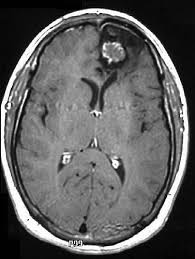It is very important to understand the difference between cancer and tumor to deal with them accordingly. Tumor and cancer both are very scary words. Most of the people think that they are two sides of the same coin. The truth is that a tumor can be non-cancerous and some cancers are not associated with any tumor or lump formation in the body.
Difference Between Tumor and Cancer
1. Difference in Pathogenesis
Tumors result from an abnormal growth of cells. There are benign tumors and malignant tumors. Benign tumors present as lumps and they do not spread to other areas of the body. When a tumor is malignant, we call it cancer. Cancer is caused by uncontrollable growth of cells, which can spread to other areas of the body.
2. Difference in Causes
The main causes of benign tumors are chronic inflammation, undetected infection, repeated stress or injury at any particular location.
The causes of some cancers are well understood while the exact reasons for others are still unclear. For example, the causes of breast cancers and stomach cancers are relatively very clear, while the causes of lymphoma still need further studies. There are certain factors which lead to increased chances of developing cancer, such as smoking, pollution, unhealthy diet, excessive alcohol consumption, and exposure to certain chemicals, toxins and heavy metals.
3. Difference in Symptoms
When it comes to difference between tumor and cancer, you have to know their difference in symptoms.
Symptoms of tumor:
The symptoms of a benign tumor depend mostly on the location. If the tumor is large, it can affect the surrounding structures and lead to pressure effects. If there is a non-cancerous brain tumor, it can lead to headache, visual disturbances or memory problems. Some possible symptoms of the benign tumors are:
- A feeling of fatigue and tiredness
- Fever
- Lack of appetite
- Pain or discomfort
- Chills and rigors
- Weight loss
- Night sweats
Symptoms of cancer:
The above mentioned symptoms can also present in cancer, but most of the time, the symptoms of cancer are more severe and can always affect organs. Common symptoms of cancer are:
- Chest pain, cough and shortness of breath
- Unexplained weight loss
- Change in bowel habits
- Change in the color or size of a mole
- Excessive bleeding. There can be blood in urine or stool. There are increased chances of developing bruises and nose bleeds, and the phlegm can be blood stained.
4. Difference in Treatment
Difference between tumor and cancer can be seen from treatment options.
Treatment for benign tumors:
- Some benign tumors do not require treatment. The best way to deal with small benign tumors which are asymptomatic is to keep a close eye on them.
- If the non-malignant tumor is causing pressure symptoms or is aesthetically unpleasing, it can be removed. These tumors can be removed by minimally invasive techniques such as endoscopy. This requires less time and the recovery is fast.
Treatment for cancer:
The main goal of cancer treatment is to destroy the cancer cells, prevent its spreading to other organs and to preserve as much normal cells as possible. The treatment greatly depends upon the type and location of cancer and the stage at which it is diagnosed. The general health of the patient has to be considered as well before a treatment plan is decided.
The main modalities of cancer treatment are:
- Surgical removal of the cancerous tissue.
- Chemotherapy medicines which destroy the rapidly developing cancer cells.
- Destruction of cancer cells using radiotherapy.
- A specific element of cancer cells is selected and targeted in target therapy.
- Another form of cancer therapy is a wearable device known as tumor treating field. This device detects the rapidly dividing cancer cells and creates an alternative electrical field to destroy these calls.
When it comes to cancer treatment, every individual is different and the same treatment is not effective for everyone. Even the same cancer requires different treatments in different individuals.
How Is Cancer or Tumor Diagnosed?

Difference between tumor and cancer can be seen from many aspects, but to be on the safe side, it is always a good idea to seek professional help for diagnosis. If you have a suspicious lump or notice any worrying symptoms which might be due to cancer, you'd better see your doctor. They can do tests to identify the exact reason.
The first test usually done is radiological imaging. X-Ray, ultrasound scan, CT scan, MRI, PET scan or nuclear imaging are commonly used to determine the site, size and shape of the tumor. The final diagnosis is made by a biopsy. A small sample of tissue is taken and is examined microscopically. The tissue diagnosis can give the exact information about the type of the tumor. Biopsy can be done using following methods:
- With a needle: A needle is used to extract small amounts of tissue or fluid from the infected site, and the procedure can be guided by ultrasound.
- With the help of endoscopy: An endoscope or a tube is inserted in the body cavities through natural openings like nose or mouth or through small incisions. The endoscope has a camera attached, and the inside cavities can be examined and the tissue is taken from the exact site.
- Surgery: Tissue samples can be taken surgically. In an incisional biopsy, a small area of lump is removed for inspection under microscope. In excisional biopsy, the whole tumor is taken out along with some surrounding healthy tissue.

